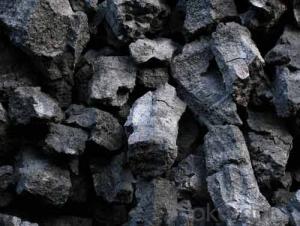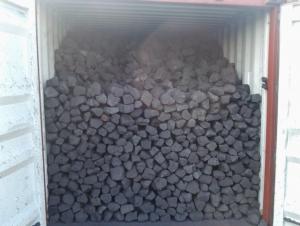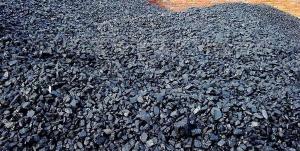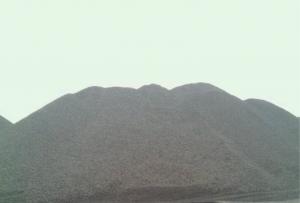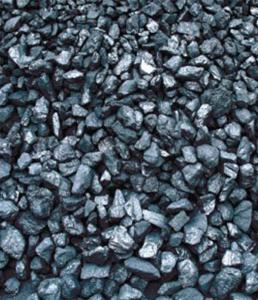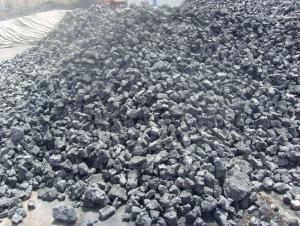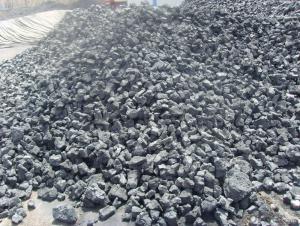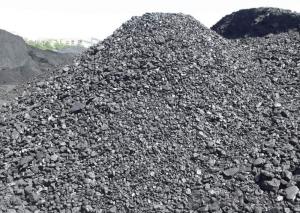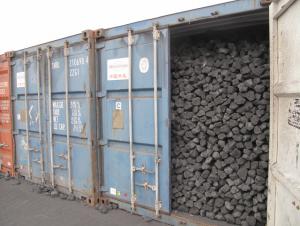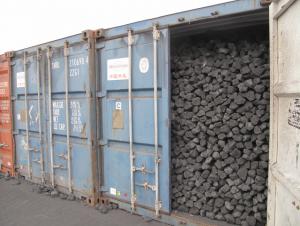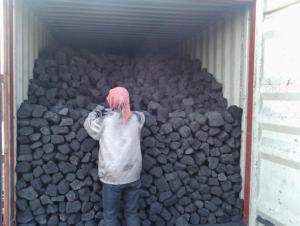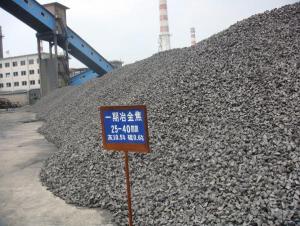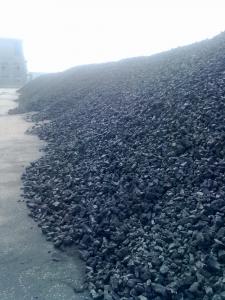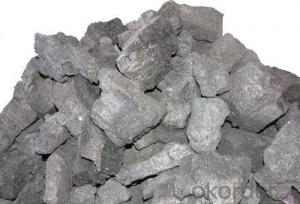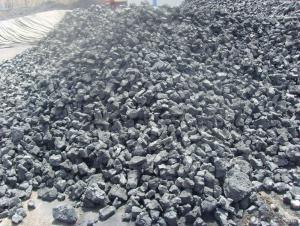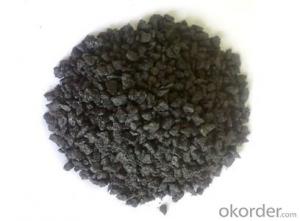The NUT Coke of Size is 20 – 40 mm
- Loading Port:
- Tianjin
- Payment Terms:
- TT OR LC
- Min Order Qty:
- 100 m.t.
- Supply Capability:
- 3000 m.t./month
OKorder Service Pledge
OKorder Financial Service
You Might Also Like
1. Structure of The NUT Coke of Size is 20 – 40 mm Description:
Coke is made by high temperature metallurgical coke for blast furnace smelting, casting and gasification. Occurring in the process of coking after recovery and purification of coke oven gas is a high calorific value of fuel, is an important industrial raw material in organic synthesis.
Coke is mainly used for blast furnace ironmaking and used for copper, lead, zinc, titanium, antimony, mercury and other non-ferrous metal smelting of blast furnace, reducing agent, compound and the function of stock column frame.
Blast furnace with Coke instead of charcoal, which laid a foundation for the large-scale of modern blast furnace, is a major milestone in the history of metallurgy.
2. Main Features of The NUT Coke of Size is 20 – 40 mm:
• Quality assurance
• Mutual benefit
• Preferential price
• Various choice
3. The NUT Coke of Size is 20 – 40 mm Images:
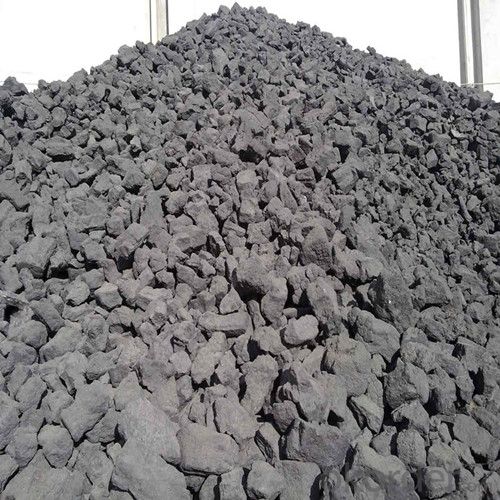
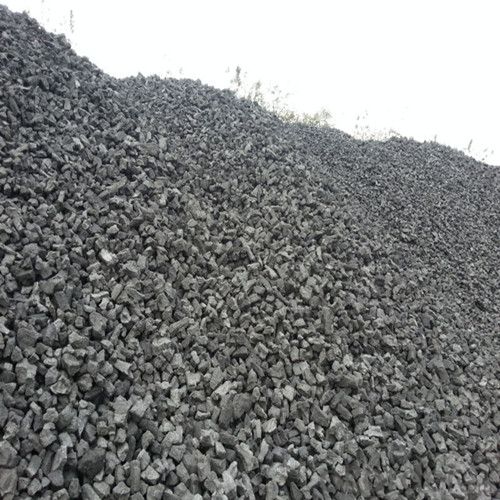

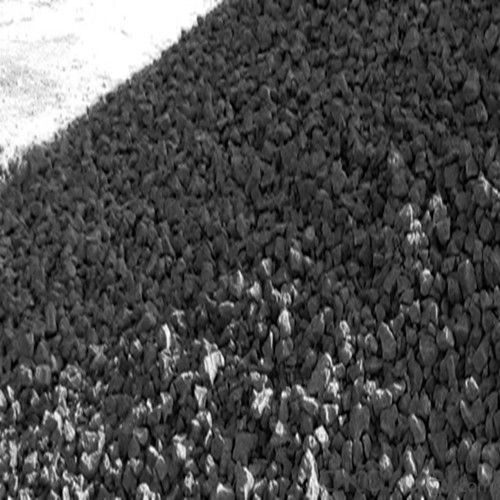
4. The NUT Coke of Size is 20 – 40 mm Specification:
Quality | Quality guaranteed | Rejection limits |
Moisture (As receive basis) | 7% max | --- |
Ash (dry basis) | 12.5% max | >13.5% |
Volatile Matter (dry basis) | 1.5% max | >1.8% |
Sulphur (dry basis) | 0.65% max | >0.75% |
Phosphorus (dry basis) | 0.035%max | >0.045% |
Size 20—40mm | 90%min | |
-20mm | 5%max | >8% |
+40 | 5%max | >8% |
5. FAQ
We have organized several common questions for our clients,may help you sincerely:
1) How to guarantee the quality of the products?
We have established the international advanced quality management system,every link from raw material to final product we have strict quality test;We resolutely put an end to unqualified products flowing into the market. At the same time, we will provide necessary follow-up service assurance.
2) What are coke's main physical properties?
The average heat capacity is 0.808 kj/(KGK) (100 ℃), 1.465 kj/(KGK) (1000 ℃)
Thermal conductivity is 2.64 kj/(MHK) (room temperature), 6.91 kj/(MHK) (900 ℃);
Ignition temperature (air) is 450-650 ℃.
3) How about your company?
Our company began to export coke when China cancelled 40% of coke export tariffs and quotas on January 1, 2013. We export many kinds of coke, such as CSR60 % and CSR 62% metallurgical coke (met coke), the NUT coke of 20 to 50 mm, coke breeze of 3 to 6 mm, and so on.
- Q:After the long-term use of non stick pan, oil stains can not be effectively removed, over a long period of time in the non stick coating on the formation of a layer of coke, the effect of losing non stick. As a result of this layer of coke is relatively dense and smooth, scouring cloth has been ineffective, steel ball can not be used to damage the coating, what chemical or physical methods to remove this layer of coke?
- Soak in hot water for a few hours (or a day and night).Two, with cooking shovel (Mason's Pihui knife is best) to remove surface soft.Three, the same with a spade close to the bottom of the pot to eradicate. Until the last thing left is black.
- Q:What is cokeWhat applications are, what is the fire of Malachite copper
- Coke is a kind of reducing agent (C), under the heating conditions and some of the oxidation reduction reaction, can restore some important minerals, such as steel mills, etc..
- Q:The total amount of heat released by the fully burnt 200g coke is 60% by mass of 10kg water absorption [q coke =3.0 * 107J/kg, C water =4.2 * 103J/ (kg = C)], q:(1) how much heat is absorbed by water?(2) if the initial temperature of water is 10 degrees C, then, after absorbing heat, the temperature will rise to how much?
- (1) the amount of heat released from complete combustion of coke:Q put =mq=0.2kg * 3 * 107J/kg=6 * 106J.Heat absorbed by water:Q =Q * 106J suction ETA =6 * 60%=3.6 * 106J;(2) Q =cm t suction dreams,Dry water temperatures:Delta t=Q ceilingC water m water=3.6 x 106J4.2 x 103J/ (kg * c) * 10kgC = 85.7,
- Q:What is the reasonable standard of volatile content of coke
- Generally speaking, the volatile content of coke is about 1.5 or so, but not more than 2
- Q:How to determine the maturity of coke or not?
- The degree of fragmentation of coke: refers to the different levels of coke accounted for the percentage of total coke production. The particle size of coke is very important in blast furnace smelting. The coke block is uniform, the gap is large, the resistance is small, and the furnace condition runs well.Breaking strength of metallurgical coke (M40 drum index)The breaking strength of metallurgical coke is an index to reflect the breaking resistance of coke.Wear resistance of metallurgical coke (M10 drum index)The wear resistance of metallurgical coke is an index to reflect the wear resistance of coke.
- Q:Coke in the whole process of steelmaking in the end is what to do, just to provide heat or carbon and other substances into steel or iron?In the study of coal classification inside, one is divided into coking coal, coking coal and coke as main, and then you see is steel or iron coke must material. What is not clear. In the end, out of coal mining is mainly used to burn energy extraction, or said that coal like oil can be converted into other products, which is a coke can convert?
- It is necessary to add coke, pellet, sinter ore, ore and other materials into the blast furnace in a certain proportion, batch and sequence, and then to produce molten iron in the reducing atmosphere of the blast furnaceAfter the hot metal to steel in converter against the general converter, scrap also need to add a certain amount of used to balance the heat. Hot metal and scrap are added to the converter after the oxygen lance for oxygen operation, the oxidation of oxygen to carbon in liquid iron, silicon, manganese, phosphorus, sulfur and some non-metallic inclusions to form steel. Adding lime, dolomite, iron oxide and mine slag and coolant is needed in oxygen at the same time. After the completion of steel smelting in the tapping process according to different requirements with the corresponding iron alloy steel, after also refining process.
- Q:Effect of coke powder ratio on the index
- 2, the phosphorus content of coke: iron metallurgical coke content should be 0.02 - 0.03%.3, coke ash: blast furnace coke ash effect is very significant. The amount of coke ash in coke increased by 1%, an increase of 2 - 2.5%., therefore, a decrease in coke ash is necessary4, coke volatile: according to the coke can be judged by the volatile content of volatile volatile is greater than 1.5%, then the coke; volatile less than 0.5 - 0.7%, which means that too much, generally mature volatile metallurgical coke to about 1%.5, coke moisture: moisture fluctuations should not be measured in coke, causing fluctuations in the furnace conditions. In addition, increased M04 coke moisture content high, low M10, the drum index error
- Q:What are the main uses of coke
- Main use of coke:1, is the most important coking products, more than 90% countries most coke used in blast furnace, blast furnace with coke instead of charcoal, laid the foundation for the large-scale modern blast, is an important milepost in the history of metallurgy.
- Q:What is the density of coke?
- Do you want to transport by rail? Ha ha, you might as well ask the freight forwarding clerk, he / she will tell you the various models of the volume and the weight can be installed, the conversion of the density of the pile is more accurate.
- Q:What's the difference between coke and coke?
- In the process of coal carbonization of coal material: when the temperature is higher than 100 degrees in coal water evaporation; the temperature rises to 200 degrees above, combined with the release of water in coal; up to 350 DEG C, caking coal begin to soften, and further the formation of colloid viscous (this phenomenon does not occur, peat lignite; etc.) to 400 ~ 500 degrees most of the gas and tar precipitation, called a thermal decomposition products; at 450 to 550 DEG C, the thermal decomposition continues, gradually thickening and curing the formation of residue char!
1. Manufacturer Overview |
|
|---|---|
| Location | |
| Year Established | |
| Annual Output Value | |
| Main Markets | |
| Company Certifications | |
2. Manufacturer Certificates |
|
|---|---|
| a) Certification Name | |
| Range | |
| Reference | |
| Validity Period | |
3. Manufacturer Capability |
|
|---|---|
| a)Trade Capacity | |
| Nearest Port | |
| Export Percentage | |
| No.of Employees in Trade Department | |
| Language Spoken: | |
| b)Factory Information | |
| Factory Size: | |
| No. of Production Lines | |
| Contract Manufacturing | |
| Product Price Range | |
Send your message to us
The NUT Coke of Size is 20 – 40 mm
- Loading Port:
- Tianjin
- Payment Terms:
- TT OR LC
- Min Order Qty:
- 100 m.t.
- Supply Capability:
- 3000 m.t./month
OKorder Service Pledge
OKorder Financial Service
Similar products
New products
Hot products
